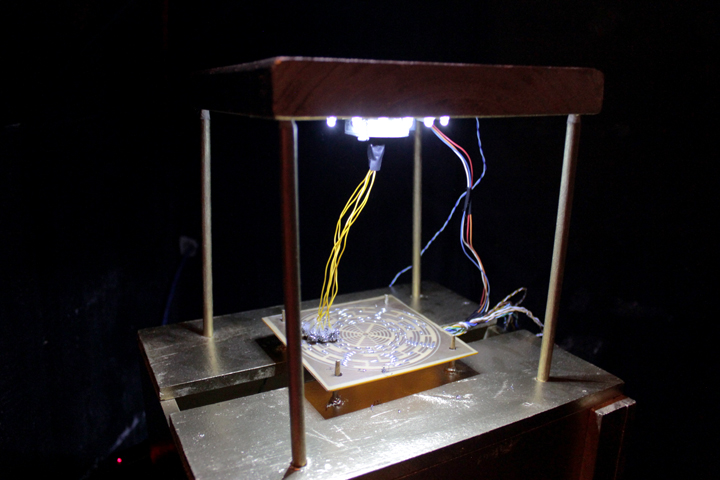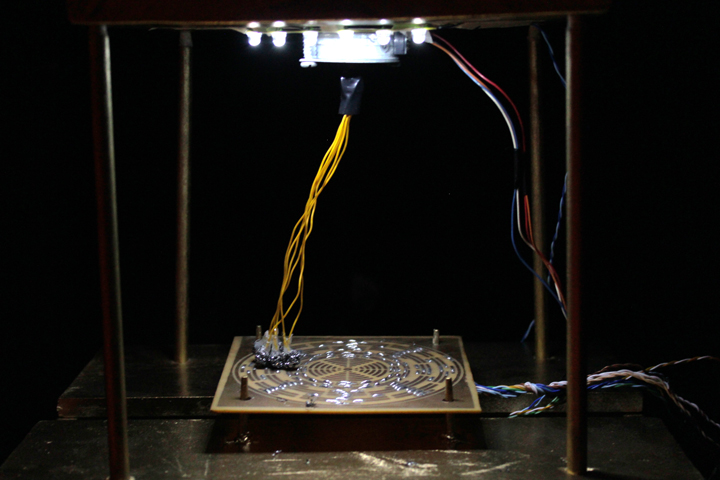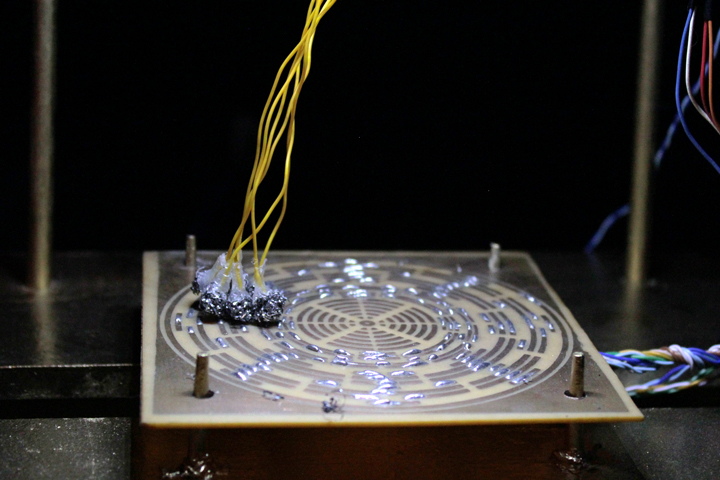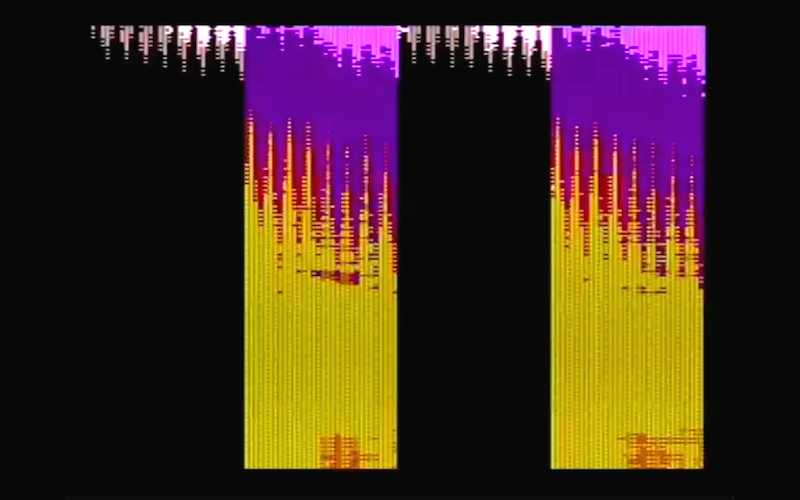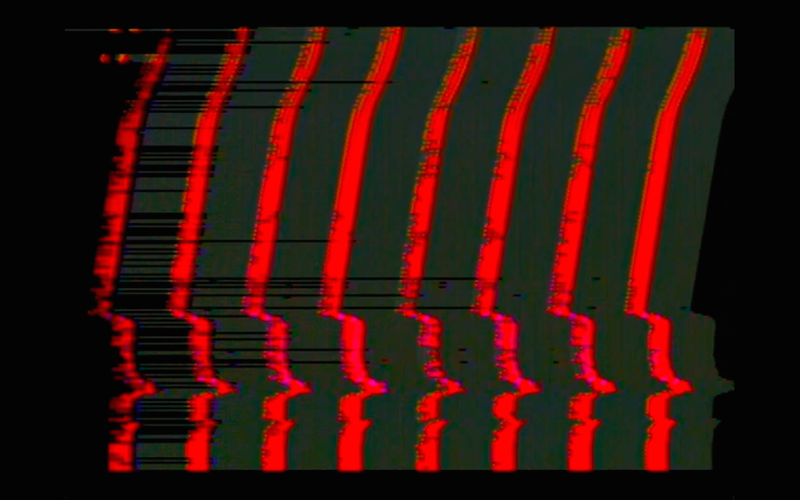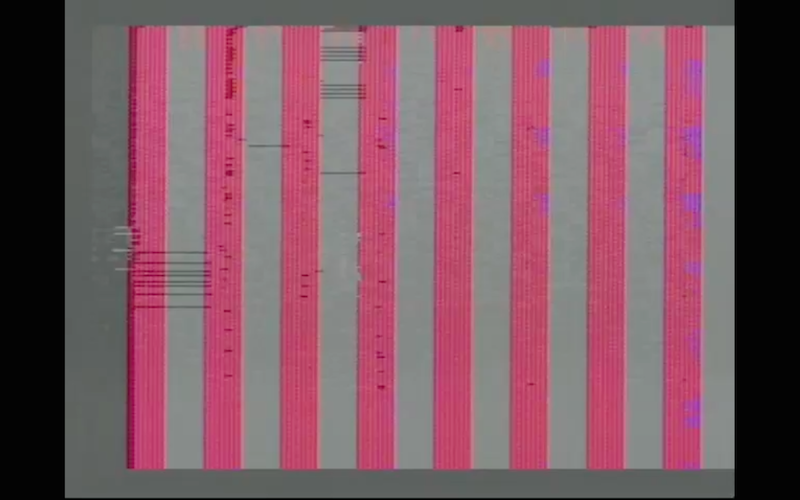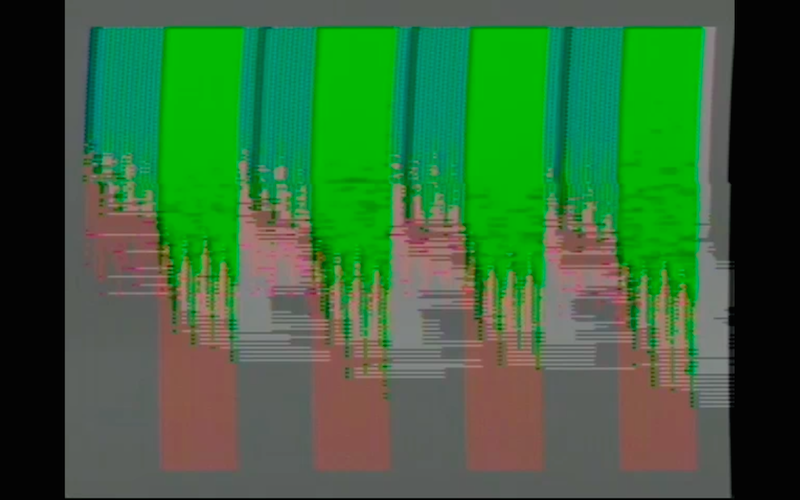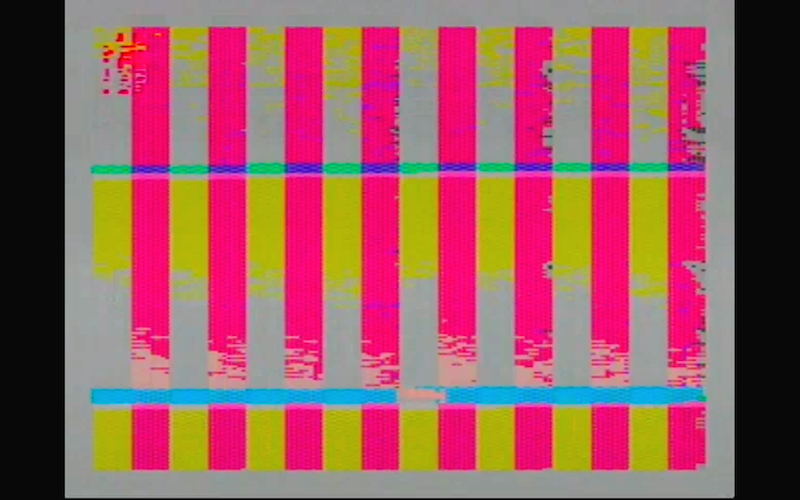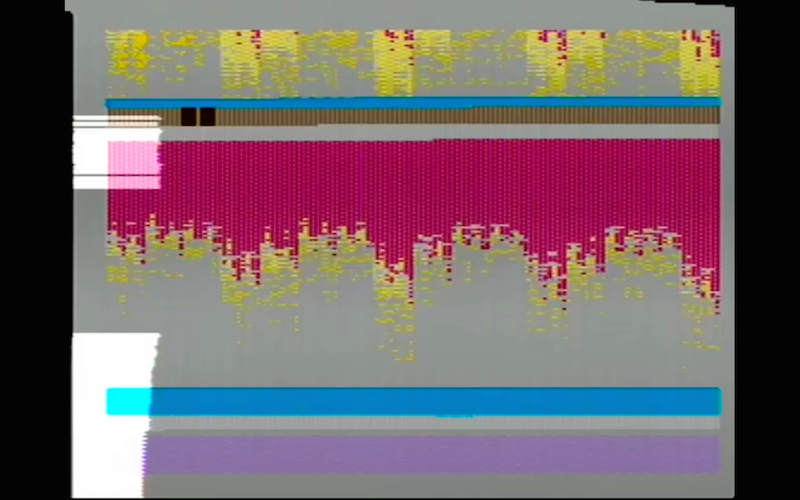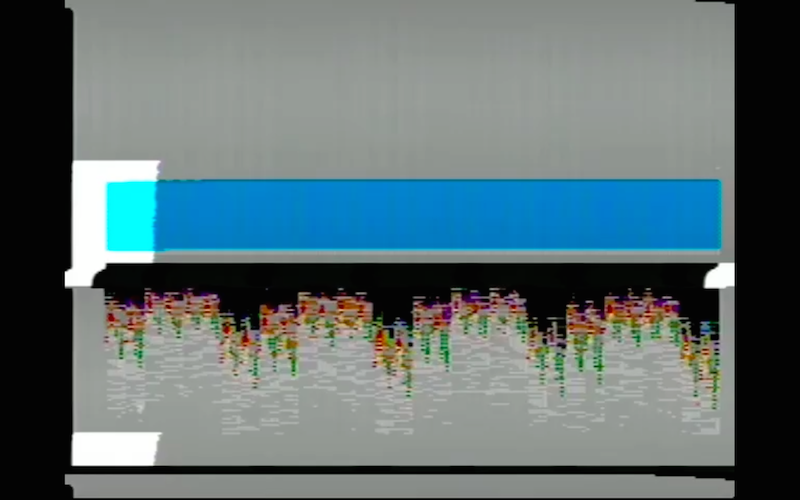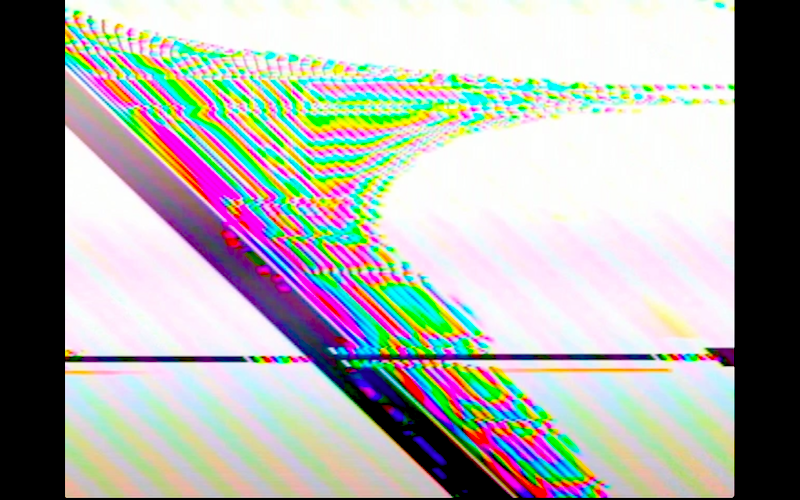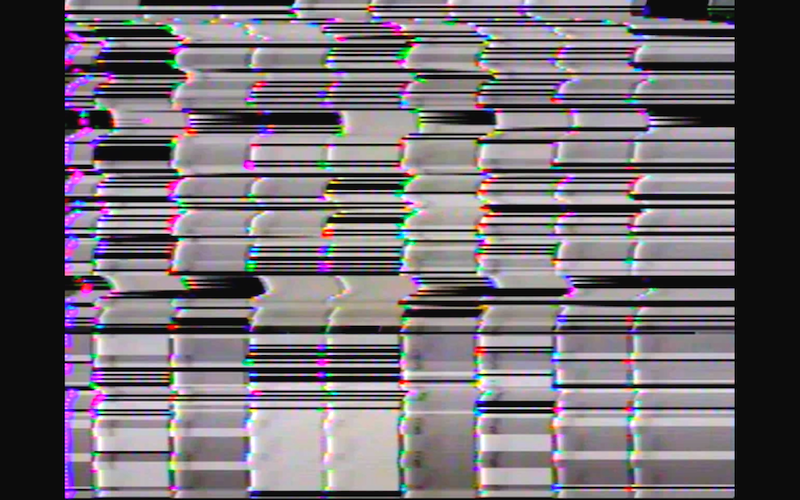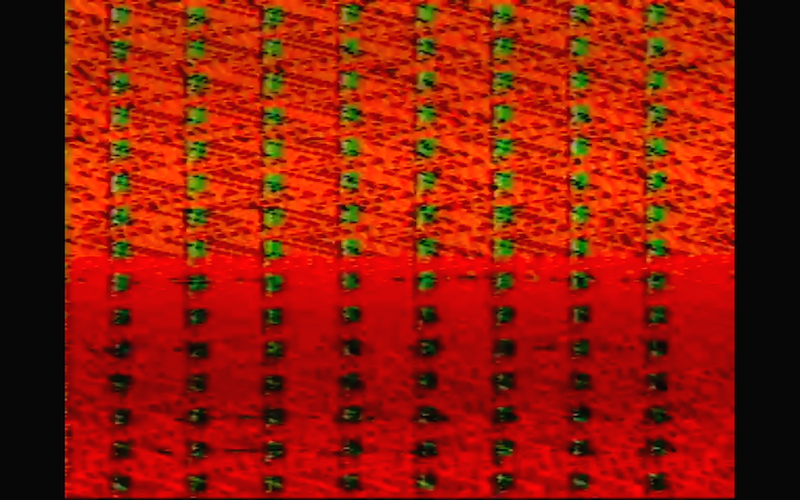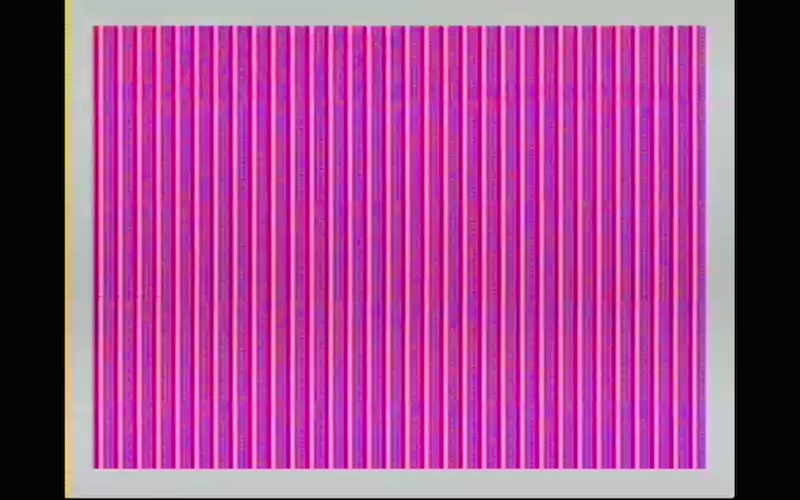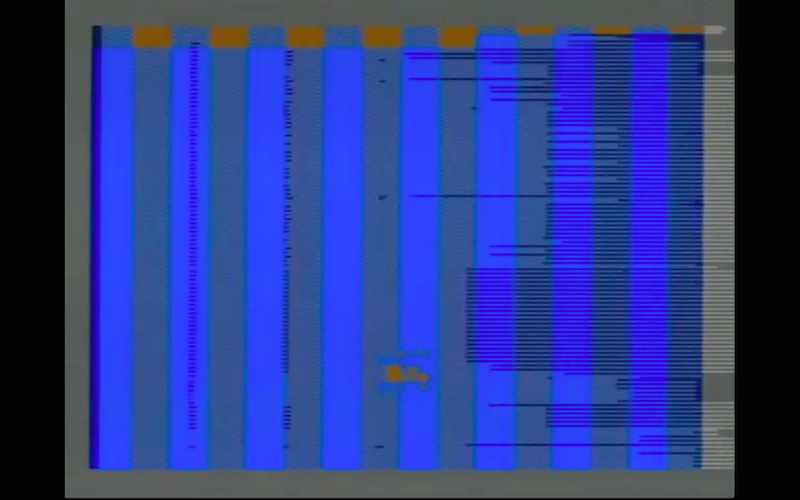Glitch-O-Rama
Interactive Installation
Arduino, Code, GlitchArt, Electronic, Circuit-Bending
Presentation of the installation in the art exhibition Sudaca at Galeria Granate, Buenos Aires, Argentina
Glitch-O-Rama is an interactive sculpture that generates glitch images in real time.

The installation consists of a bundle of cables attached to a motor, the ends of those cables touch the pcb board -especially designed for this work- which is soldered to a video source (electronic board).
Through a joystick, speed and direction of the motor can be controlled intervening the result displayed on a screen, generating short-circuits which can affect the video image. Using this semi-randomized control system, the device creates different visual configurations and infinite unpredictable patterns.
Through the interaction with the sculpture the user can manipulate the generative digital video in real time.
A range of possible short circuits were selected according to their aesthetic potentials and then connected to the video source. This mixture of different electronic interventions and their mechanisms of activation impact directly in the results you can see on the screen.
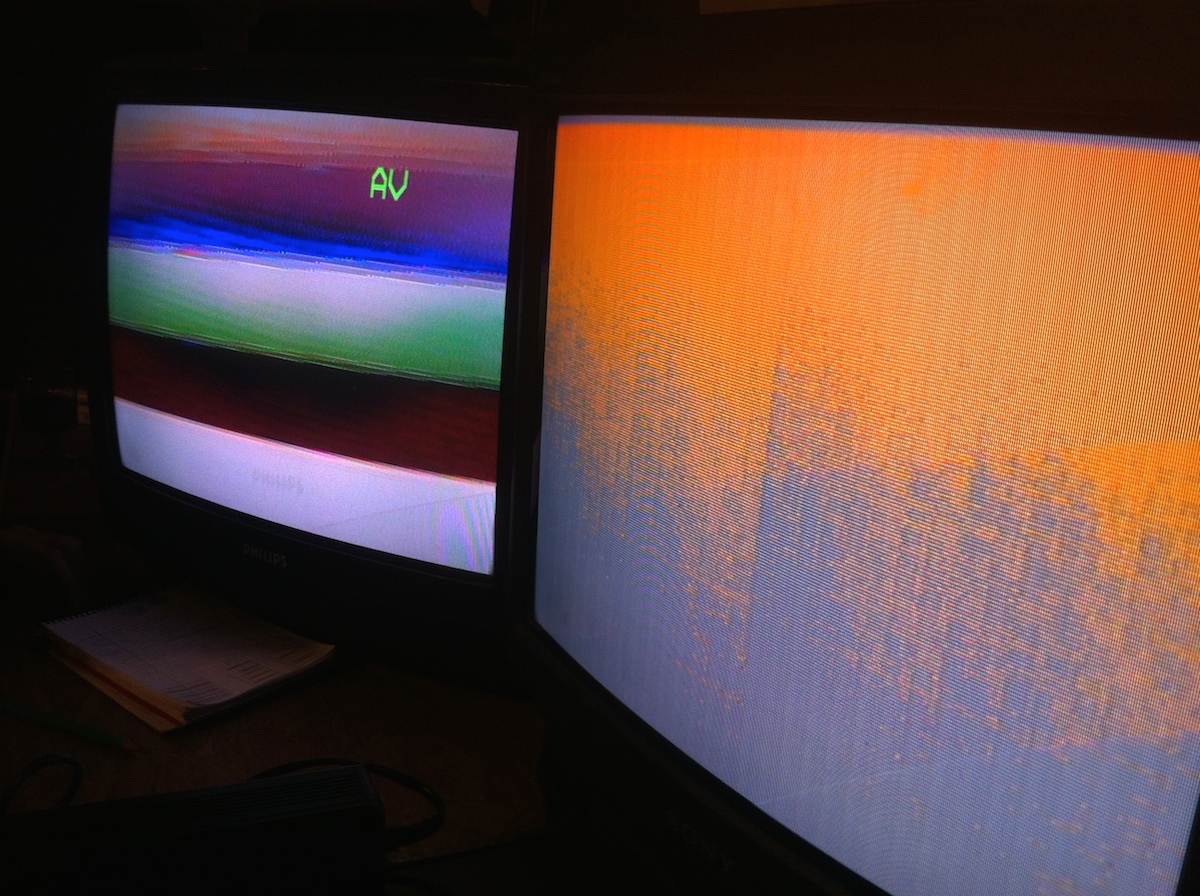
Realtime Screenshots
"My First Sony" was a series of smaller-scale electronics made by Sony in the mid-late 1980s made for children.
They were made of brightly colored plastic, usually red, and large colorful buttons with simple controls.
My First Sony products included a Walkman, amplified microphone with tape deck, recording tape deck, Boom box, alarm clock, headset walkie talkies and the video source of Glitch-O-Rama, a toy called “Electronic Sketch Pad” that allows you to make digital draws using the digital pen and connecting the device with your TV.
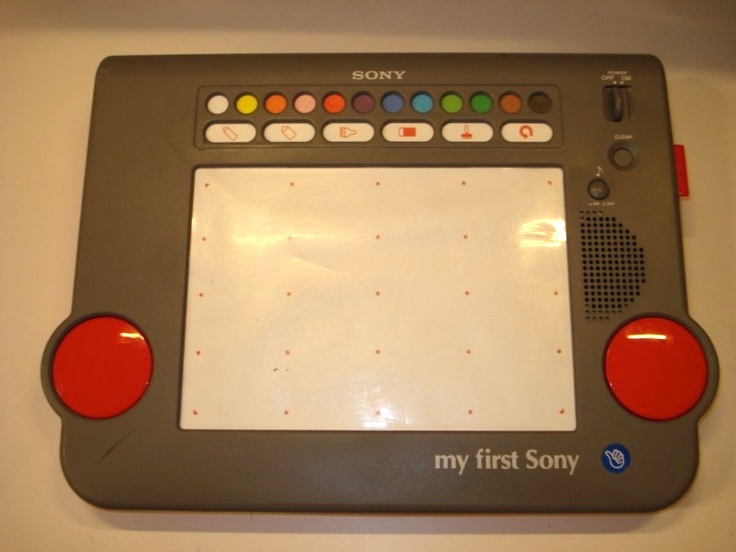
An example of the device working as intended by Sony “properly".
The commercial Jingle said: "I like to sing, to ride a pony, but I prefer My First Sony””.
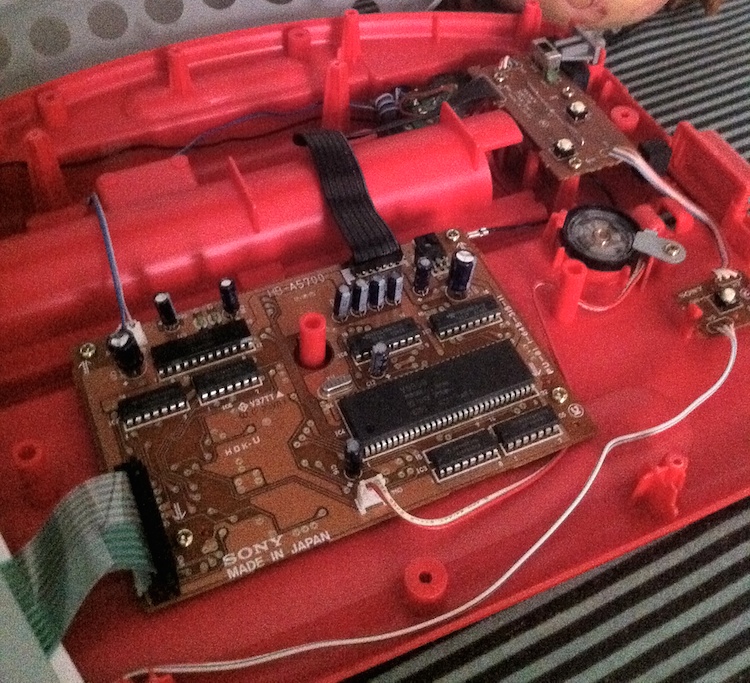
The source of the video signal was hacked electronically using circuit bending techniques.
I have chosen fourteen contact points on the main board. Each of these hacks were able to generate a different visual glitch.
Researching on these visual options, I discovered the possibility of not only triggering images, but also mixing them with each other in order to obtain unexpected results from different combinations.
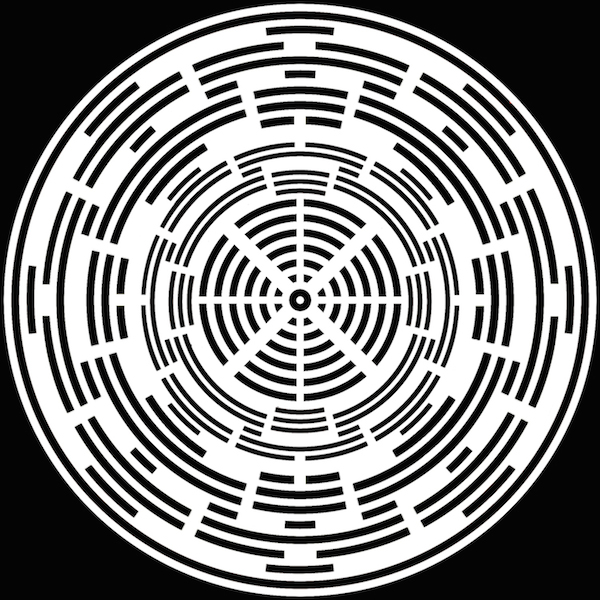
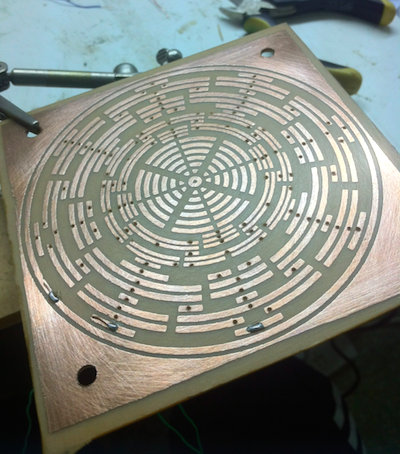
With the objective of mixing the fourteen previously selected contact points, I designed a PCB (Printed Circuit Board) where the small metal balls that were attached to the stepper motor could move freely and affect the video signal by shorting the board randomly.
In the installation, the user can use a joystick to control the movement and speed of the motor. The “aircraft” type joystick is connected to an Arduino which is also connected to a stepper motor. This interface is programmed to use the X axis for the speed of the movement, and the Y axis for the direction (clockwise or counterclockwise).
The notion of randomness is a fundamental part of this piece. A fine balance between the user control and the ability of the system to generate random results, allows a glitch aesthetic that is based on a desired unpredictability.
